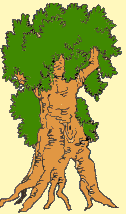ZIZIPHUS MAURITIANA
ZIZIPHUS MAURITIANA
ZIZIPHUS MAURITIANA
Wolof: Sidem; French: Jujube
The jujube tree is a thorny and sarmentose shrub reaching 1 to 2m high. Its bark is gray to brown, with a pink or red slice. The twigs are pubescent becoming glabrous, gray or whitish, with internodes less than 1 cm apart. The thorns are arranged in pairs in the axils of the leaves, and are more or less straight and tapering. One is facing upwards, 1.8cm long and the other facing downwards shorter. The leaves are alternate, oval, with a finely crenelated edge, with an acuminate tip, and a symmetrically rounded base
The petioles are 0.2 cm long. The veins are palmate at the base, with 3 basal veins, then two outer veins each carrying 4 to 7 projecting tertiary veins, arched and more or less parallel to each other. The flowers are short pedicellate, yellowish-white, 3-4mm in diameter, with a fairly pubescent calyx with 5 teeth, corolla with 5 petals. The fruit is a globular, glabrous drupe, 1cm in diameter, ocher-orange when ripe, containing a large stone embedded in a more or less floury pulp.
The jujube tree inhabits the Saharan to Saharan Sahelian zones and is present from Mauritania to Niger, and to the Sahara. It is Scattered, quite rare and uncommon.
Medicinal Use: The leaves are used to treat abscesses, swelling, and sores. The roots are used for abdominal pain and sore throat.
Add a comment























